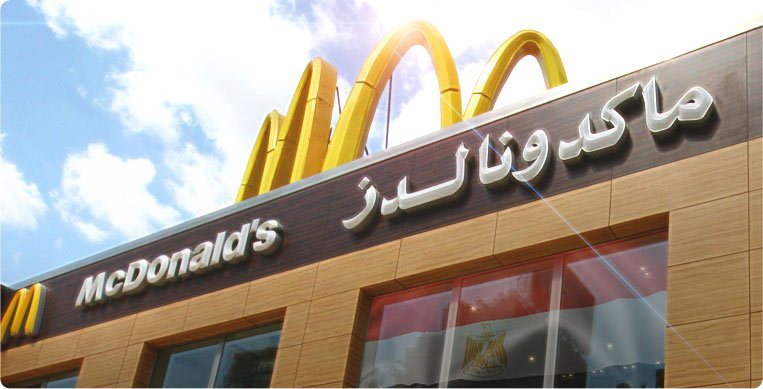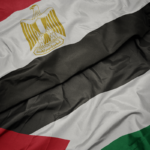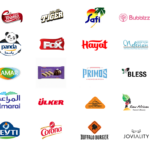McDonald’s is not having a good day.
Late last night, a video surfaced from a very disgruntled customer. The Facebook post, in which he states he was threatened with knives and hot oil, has been shared over 2k times now.
Mahmoud Nassar, whose Instagram states he is an MMA fighter, had ordered a meal from the international fast food franchise through food delivery website Otlob, but was disappointed when it was received cold, and 3 hours late.
Nassar then called McDonald’s directly.
- Advertisement -
“I then called their customer service to return the order and they held me on the phone for 10 mins and they refused to return the order because I placed it through Otlob.com.” states Nassar in his Facebook post.
After contacting McDonald’s directly and being told he could not send the food back, Nassar went to the branch itself.
What ensued was a dangerous breach of protocol by the McDonald’s staff.
Nassar would later post a video, and long post, explaining that a fight had resulted after tense dealings with the staff. He then states that he was threatened with knives and hot oil, at one point in his video you can see the fry-cook holding a container of what seems to be frying oil.
The video has already been viewed over 400k times and the overall post has been shared over 2.4k times.
According to one commenter, who states he was there, the location of the fight was at the Wonderland Branch in Nasr City.
Social media has already come to bash the international food chain, with many angry from the lack of good service, threats, or asking why would they go to an “overpriced” food chain. Some have spoken against the poster, saying that he was wrong to call the franchise and should have gone through Otlob.
But the main issue here is the unacceptable behavior of the staff members, many of whom can be seen yelling at customers, and of course we must not forget about the fry-cook who endangered lives with what seemed to be hot oil.
How to Respond to a Social Crisis?
McDonald’s Egypt has yet to issue a statement.
It doesn’t matter the industry you’re in, or how popular you’ve been to this point. Sometimes, it just happens. It is not uncommon for a large company to have to deal with a social media crisis, but some handle them better than others.
Respond to the issue as soon as possible. The faster you acknowledge the problem, take responsibility and apologize for any wrong doing – the better.
Before the crisis set a listening protocol
Successful digital PR strategy should include lifeguard mode. One of the keys to successful social media crisis mitigation is pre-crisis planning.
Brands should have a plan in place to avoid a social media crisis, stopping reputational damage before it escalates. Getting reputation management right before a crisis unfolds can actually cost relatively little – but getting it wrong can quickly become an extremely expensive mistake.
However, regardless of well-laid plans, occasionally this connected, public world can explode into a fit of rage and fury.
Know what is and what is not a crisis: Define “a crisis”
Considering the severity of the problem is the first step in social media crisis management. If the problem’s smaller, like a minor customer complaint, you may not need to push it too far up the ladder.
But if the problem’s a bigger issue, like a very offensive post, or caused by an element outside of social media, like a huge delay in shipments, a product recall or catastrophe, you will need to refer to your crisis plan.
According to Convince and Convert, When somebody sending a mean or negative feedback about your business doesn’t constitute a crisis. There are three characteristics of a true social media crisis. If these three happen, you’re in crisis mode.
- A social media crisis has information asymmetry. When the company does not know any more than the public about what’s going on. When your plane lands in the Hudson River, and you start seeing Twit Pics of it, that’s information asymmetry – the first sign of a social media crisis.
- A social media crisis is a decisive change from the norm. Nike (and now Apple) are routinely criticized for labor practices. Social chatter about that is ongoing and expected, however. That’s not a crisis. When a markedly different line of criticism occurs, that’s the second sign of a social media crisis.
- A social media crisis has a potentially material impact on the company overall. Somebody tweeting that Subway left mustard off their sandwich isn’t a crisis. A gunman at a Subway is. Scope and scale is the theirs sign of a social media crisis.
Fight Social Media Fire With Social Media Water
How you react publicly during a crisis is likely to define your success. You could have a great plan and a smart team, but if the message is wrong you’ve got no chance.
Once you have some information, you should respond first in the venue where the crisis first broke. If the crisis initiated on Facebook, respond first on Facebook. Then circle around and respond in other venue that have picked up on the crisis.
You can’t plan your specific response yet, since you don’t know what the crisis is. Instead, establish your core values as a company, and your main value proposition to customers. Whatever your response during the tough times, these should be central.
Why is this important?
Things will be moving at a mile a minute. Despite your best intentions, you can’t monitor everything every spokesperson or social media manager says and posts.
What you can ensure is that they convey the most important information. If you remind customers why they came to you in the first place, you have a far better chance of keeping them around.
Learn Your Lessons
After the crisis subsides, and you’ve dried the tears off your laptop, reconstruct and deconstruct the crisis. Document every facet:
- How did the online crisis intersect with offline media coverage (if any)
- Make copies of all tweets, Facebook status updates, blog comments, etc.
- Document all emails correspondence
- Analyze website traffic patterns and search volume patterns
- Where did the crisis break, and when? Where did it spread, and how?
- How did your internal PR and Social Media teams work together?
- How did your response protocol work and if any updates needed?
- If specific customers rise to your defense, (thank them!)
Main Digital PR Takeaway:
All social media crisis could have been, if not prevented, at least mitigated before it turns into a flaming snowball!
Update
Mcdonald’s has yet to issue an official statement, but a spokesperson for the company called in to nightly talk show Hona Al Qahira.
The spokesperson has stated that an operations manager has gone to the branch in question, and have spoken to staff members. Expressing what happened as “inappropriate and rejected behavior.”
According to the spokesperson, the two main offenders who threatened Mahmoud Nassar and others in the restaurant with a knife and hot cooking oil, have been fired due to their misconduct.
Although the company has come out to apologize to the hurt party, they have done it on a different and less personal platform.
As stated earlier, “…you should respond first in the venue where the crisis first broke. If the crisis initiated on Facebook, respond first on Facebook. Then circle around and respond in other venue that have picked up on the crisis.”
There may be some hope left, as this does not seem to be an official statement.
Will McDonald’s, or their PR partner, learn from their mistake? Will they take their apologies to Facebook? Let us know what you think in the comments.








